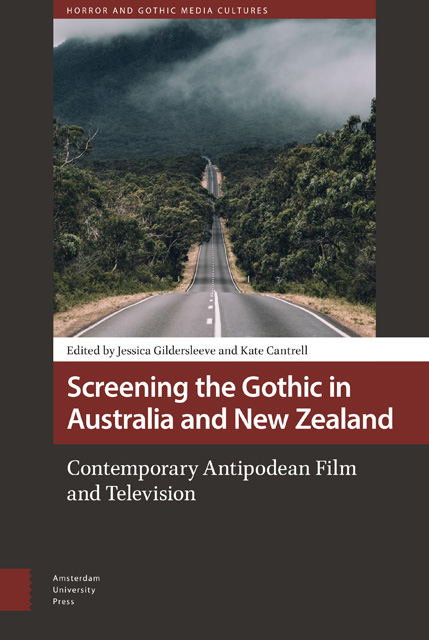Introduction : Please Check the Signal: Screening the Gothic in the Upside Down
Published online by Cambridge University Press: 24 November 2022
Summary
Abstract
How do Antipodean films and television programmes represent their own sense of the Gothic? What does the contemporary Gothic look like on the large and small screen in productions from Australia and New Zealand? New ways of watching film and television via popular streaming services have seen a reinvigoration of this ‘most domestic of media’. What does this look like ‘Down Under’ in the twenty-first century? This introduction to the collection traces representations of the Gothic in film and television in Australia and New Zealand in the twenty-first century. It attends to the development and mutation of the Gothic in these post- or neo-colonial contexts, concentrating on the generic innovations of this temporal and geographical focus.
Keywords: contemporary Gothic; Australia; New Zealand; screen studies
The popular Netflix series Stranger Things (2016–) partly derives its terror from its construction of a parallel universe termed the ‘Upside Down’. This alternate dimension is a site of chaos, destruction, and invasion, a space constructed in opposition to the civilization and familiarity of the small North American town inhabited by the series’ teenaged protagonists. A similar concept appears in the second season of the American series Channel Zero (2016–2018) in which an uncanny alternate universe is accessed via the ‘No-End House’; in this subverted world, people and things look the same as they do in the ‘real world’, but behave, horrifically, very differently. We borrow the term ‘Upside Down’ because the Otherness it evokes mimics the construction of Australasia as the ‘Antipodes’, a space not only geographically opposite to the northern hemisphere but, in the lingering relics of colonial discourse, culturally and philosophically opposite too. In Australia and New Zealand, such an orientalist or carnivalesque construction supposes, everything is ‘upside down’, topsy-turvy, out of place. As the travel writer Jan Morris famously wrote of the Land Down Under, ‘the water goes down the plug-hole the other way in Australia, and it really is possible to imagine, if you are a fancifully minded visitor from the other hemisphere, that this metropolis is clinging upside-down to the bottom of the earth’ (470).
- Type
- Chapter
- Information
- Screening the Gothic in Australia and New ZealandContemporary Antipodean Film and Television, pp. 7 - 18Publisher: Amsterdam University PressPrint publication year: 2022

